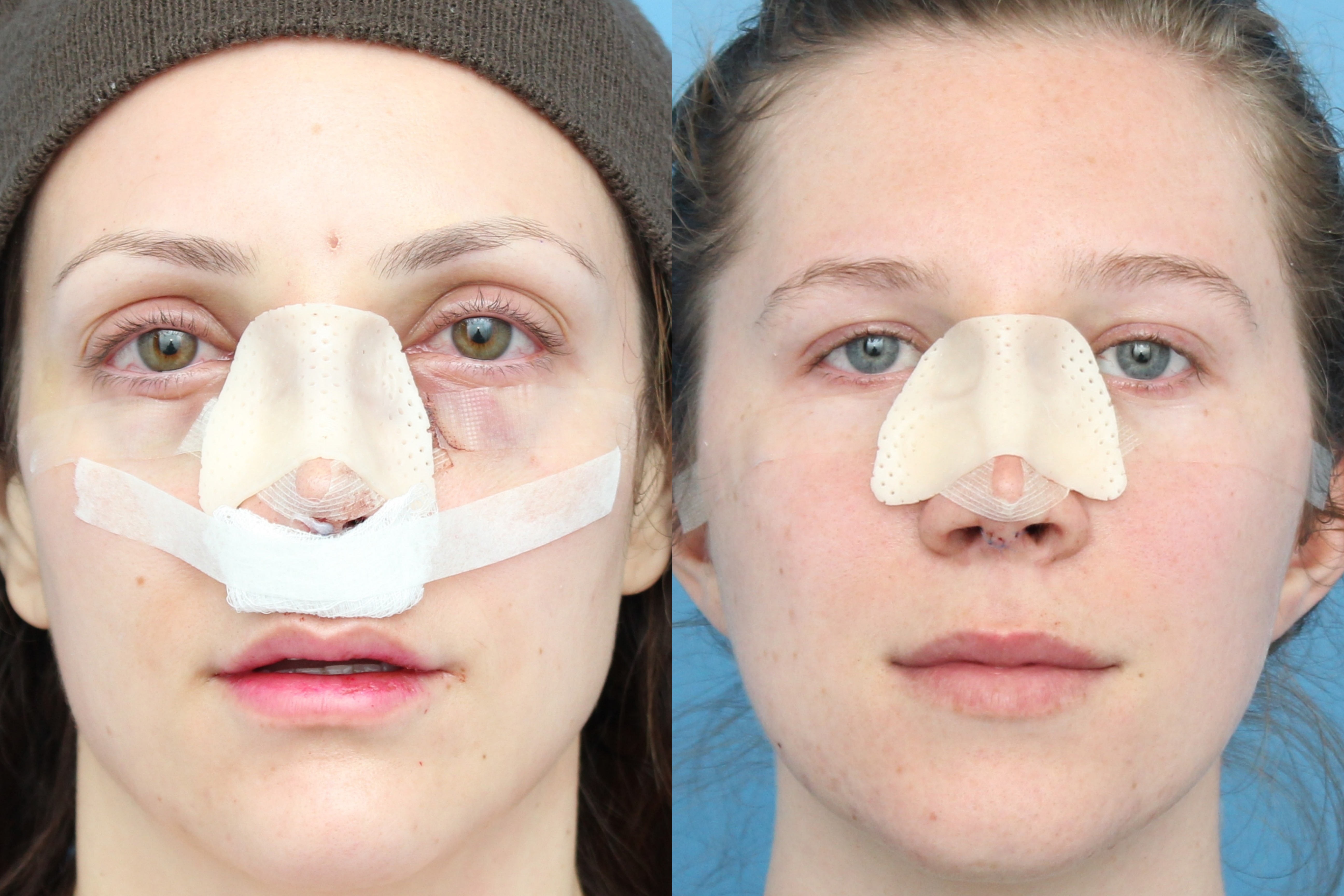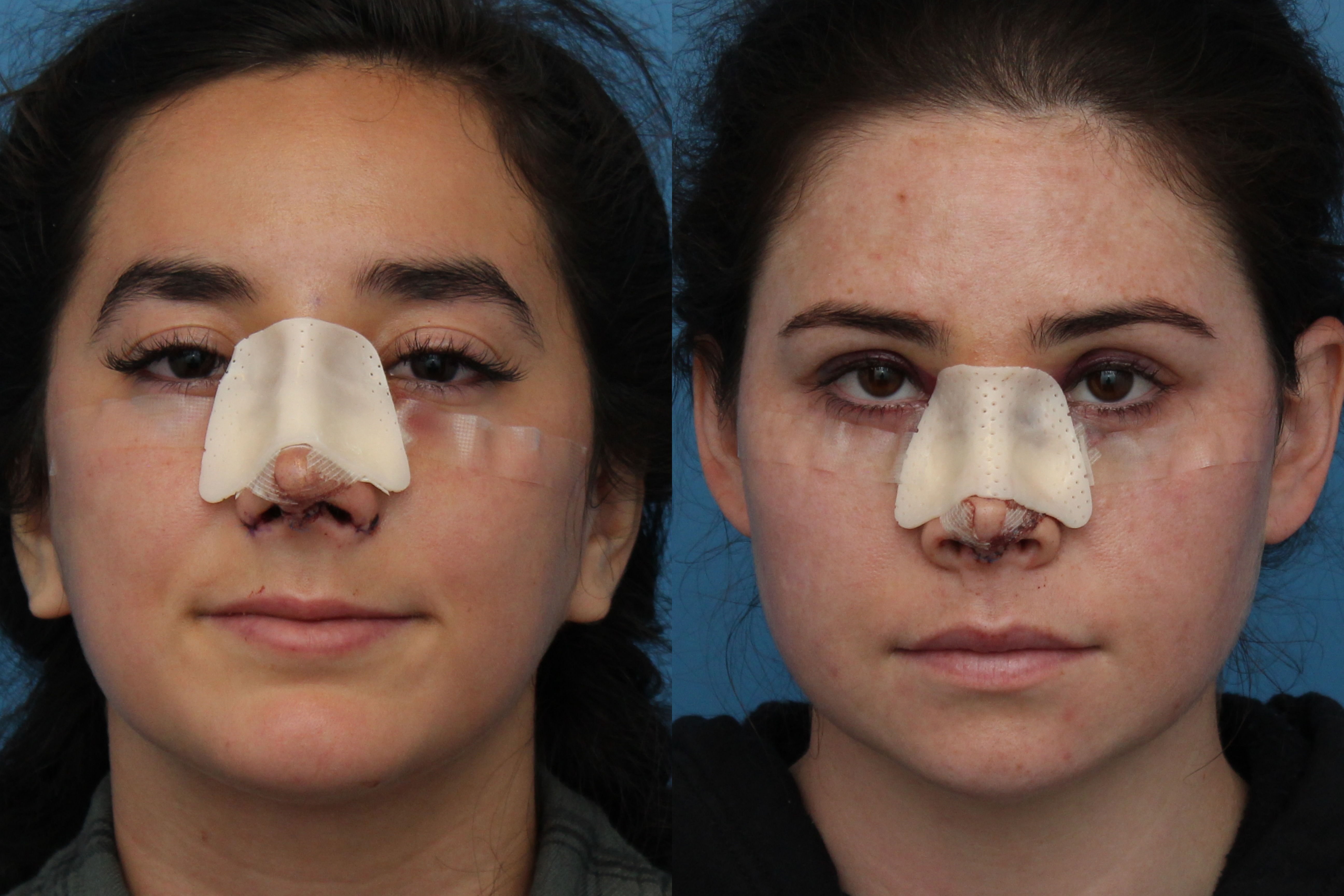For years many of my patients told me that their main concern about rhinoplasty was postoperative recovery. I have heard so many stories about patients having prolonged swelling and bruising for over a month.
Diminishing the amount of bruising, swelling, and postoperative recovery with rhinoplasty surgery became a focus for me. I discovered several techniques that have dramatically diminished the amount of swelling and bruising after rhinoplasty. Specifically, injecting a local anesthetic containing epinephrine on the undersurface of the nasal bones, performing external discontinuous osteotomies, and taping the lower eyelids are the main aspects of the ”No-bruise” rhinoplasty technique. It is vitally important that when performing the osteotomies, it is performed very gently with specific attention to not pass point the osteotome through the mucosa. This more gentle osteotomy technique allows me to just mold the bones together rather than performing a very aggressive in-fracture.


Rhinoplasty patients first-day post-op.
Rhinoplasty is an art form that most plastic surgeons never master. Over many years, I have had a specific interest in learning rhinoplasty and developing techniques and rhinoplasty. After 25 years in practice, I have performed well over 1000 rhinoplasties. At this point in my career, I have developed a mastery of rhinoplasty and perform up to 3-4 per week. The vast majority of my rhinoplasty patients have very little swelling and bruising even on the first day after surgery and almost all patients have no bruising by 7 days.

